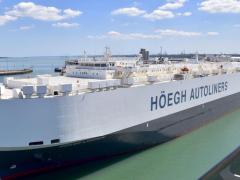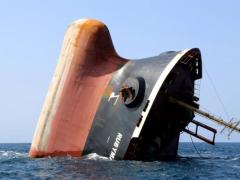Mozambique’s port of Beira is aiming to become the “Rotterdam of southern Africa” following the dredging of the approach channel and port. Marketing and sales manager Félix Machado says the dredging – completed in July 2011 – has had an immediate positive spin-off for Beira and neighbouring countries. “We are already attracting new investments in agriculture, as well as manufacturing and distribution,” he told FTW. Adding value in the port city rather than focusing solely on transit cargo is where Beira stands out from other southern African ports. The dredging of the port has injected a new dose of optimism and energy into the city’s business community. Adding to the sentiment is the opening up of a number of mega coal mines in the Tete province – the biggest of which are owned by Brazilian company Vale, and a partnership between Tata of India and the Australian mining company Riverside. Other companies developing projects in the region include Eurasian Natural Resources Corporation, Coal India, Jindal Steel and Power, and Beacon Hill Resources. Riverside’s first coal exports have already been loaded at Beira, and a new coal terminal is under construction. Container and breakbulk traffic will benefit from the coal terminal because it will generate the volumes and revenues required to keep the channels open. A maintenance dredger has been acquired by the port, and further investment is planned by Cornelder de Mozambique (CdM), the publicprivate partnership which has been running the port since October 1998. CdM is a joint venture between the Mozambique Ports and Railways Company (33%), and Cornelder Holdings, which is based in Rotterdam, Holland. Machado says the revival of the port is attracting other investors as well. They include a Nestlé plant, cotton processing, textiles, the building of steel trailers, a paper plant, milling companies, fertiliser blending facilities and reefer handling facilities. Most of this investment centres around the revival of agriculture in Mozambique itself, as well as neighbouring Zimbabwe, Zambia, Malawi, the Democratic Republic of Congo (DRC) and Kenya. Beira has become the centre point for the importation and blending of fertilisers for the farming operations, as well as the export gateway for the produce. Cornelder is gearing itself for the doubling of volumes from the 1.29 million tons of general cargo and 105 000 TEUs handled in 2010, says Machado. The container terminal will be able to handle up to 400 000 TEUs a year, he says. All operations in the port are computerised, and the harbour is fully ISPS compliant. Two post-Panamax gantry cranes are on order, while the two existing gantry cranes have been completely refurbished. Dedicated sugar and tobacco terminals are being planned, and the port is being reconfigured in order to improve efficiencies. To accommodate new tobacco exports from the Tete province, leaf from Malawi, as well as the resurgence of the Zimbabwean industry, a new break-bulk warehouse has been built in the port. A new 30 000-ton grain terminal was opened in 2010, and this capacity is expected to be doubled by 2015. Cornelder has also invested in a new fleet of reach stackers, terminal tractors and other equipment to improve efficiencies within the port.












